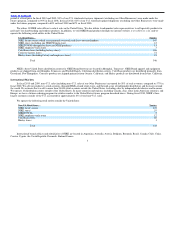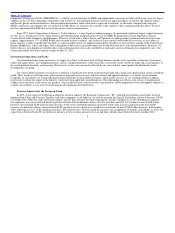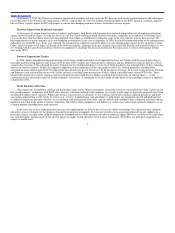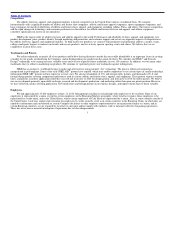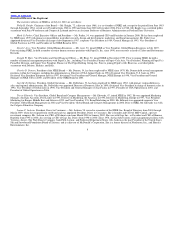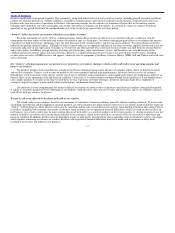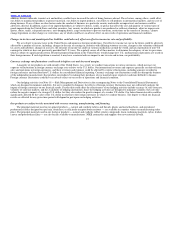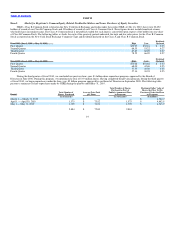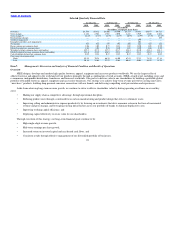Nike 2010 Annual Report Download - page 15
Download and view the complete annual report
Please find page 15 of the 2010 Nike annual report below. You can navigate through the pages in the report by either clicking on the pages listed below, or by using the keyword search tool below to find specific information within the annual report.
Table of Contents
Global capital and credit market conditions, and resulting declines in consumer confidence and spending, could have a material adverse effect on our
business, operating results, and financial condition.
Continuing volatility and disruption in the global capital and credit markets have led to a tightening of business credit and liquidity, a contraction of
consumer credit, business failures, higher unemployment, and declines in consumer confidence and spending in the United States and internationally. If
global economic and financial market conditions deteriorate or remain weak for an extended period of time, the following factors could have a material
adverse effect on our business, operating results, and financial condition:
• Slower consumer spending may result in reduced demand for our products, reduced orders from retailers for our products, order cancellations,
lower revenues, increased inventories, and lower gross margins.
• We may be unable to find suitable investments that are safe, liquid, and provide a reasonable return. This could result in lower interest income
or longer investment horizons. Disruptions to capital markets or the banking system may also impair the value of investments or bank deposits
we currently consider safe or liquid.
• We may be unable to access financing in the credit and capital markets at reasonable rates in the event we find it desirable to do so.
• The failure of financial institution counterparties to honor their obligations to us under credit and derivative instruments could jeopardize our
ability to rely on and benefit from those instruments. Our ability to replace those instruments on the same or similar terms may be limited under
poor market conditions.
• We conduct transactions in various currencies, which increase our exposure to fluctuations in foreign currency exchange rates relative to the
U.S. dollar. Continued volatility in the markets and exchange rates for foreign currencies and contracts in foreign currencies could have a
significant impact on our reported financial results and condition.
• Continued volatility in the markets and prices for commodities and raw materials we use in our products and in our supply chain (such as
petroleum) could have a material adverse effect on our costs, gross margins, and profitability.
• If retailers of our products experience declining revenues, or retailers experience difficulty obtaining financing in the capital and credit markets
to purchase our products, this could result in reduced orders for our products, order cancellations, inability of retailers to timely meet their
payment obligations to us, extended payment terms, higher accounts receivable, reduced cash flows, greater expense associated with collection
efforts, and increased bad debt expense.
• If retailers of our products experience severe financial difficulty, some may become insolvent and cease business operations, which could
reduce the availability of our products to consumers.
• If contract manufacturers of our products or other participants in our supply chain experience difficulty obtaining financing in the capital and
credit markets to purchase raw materials or to finance general working capital needs, it may result in delays or non−delivery of shipments of
our products.
Our business is affected by seasonality, which could result in fluctuations in our operating results and stock price.
We experience moderate fluctuations in aggregate sales volume during the year. Historically, revenues in the first and fourth fiscal quarters have
slightly exceeded those in the second and third fiscal quarters. However, the mix of product sales may vary considerably from time to time as a result of
changes in seasonal and geographic demand for particular types of footwear, apparel and equipment. In addition, our customers may cancel orders, change
delivery schedules or change the mix of products ordered with minimal notice. As a result, we may not be able to accurately predict our quarterly sales.
Accordingly, our results of operations are likely to
12



